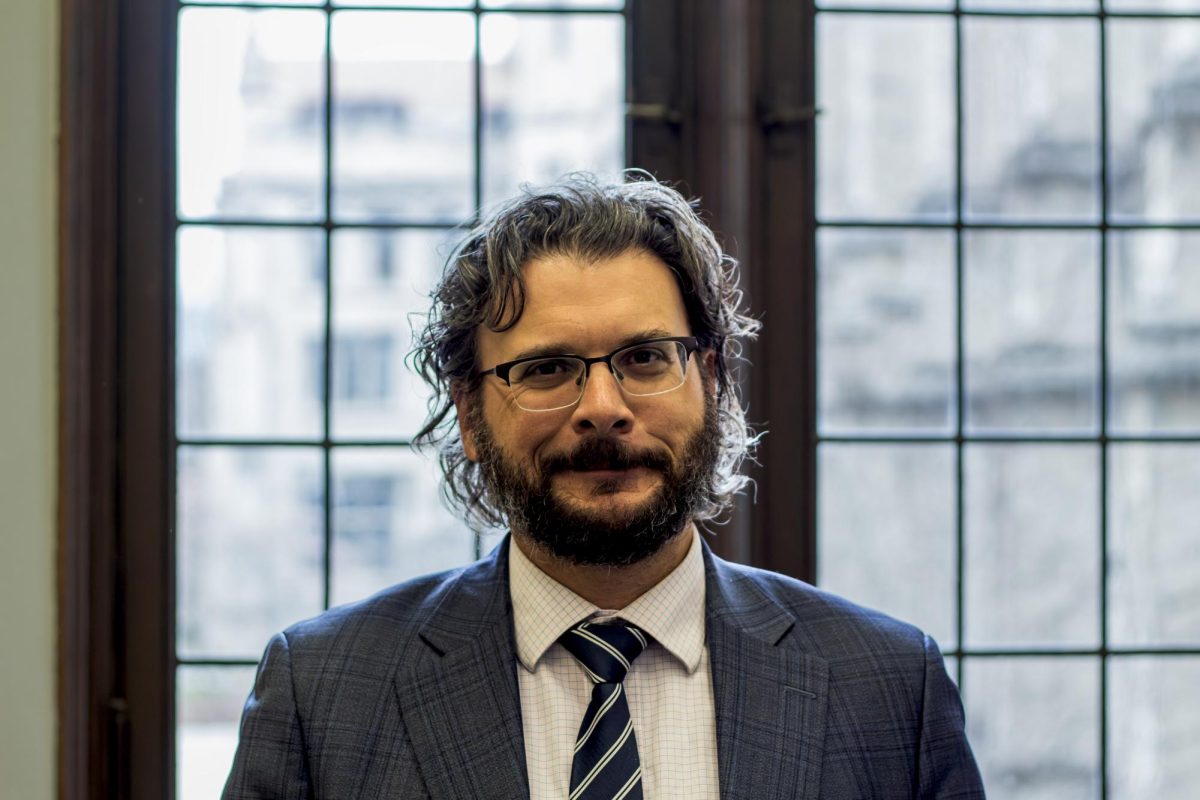An article in last week’s History News Network (HNN) online magazine alleged factual inaccuracies and pro-Muslim bias in one of the Oriental Institute Museum’s exhibits.
Historian Diana Muir wrote the piece published in HNN, an independently operated project of George Mason University’s Center for History and New Media.
The article, entitled “Muslim Propaganda at the University of Chicago,” took issue with a set of captions written on a plaque in the museum’s Ancient Israel gallery. According to Muir, the museum staff has skewed historical facts in these captions “to satisfy a political agenda.”
“There really is no issue here,” said Geoff Emberling, director of the Oriental Institute Museum, in response to Muir’s recent allegations. “We have no political ax to grind, no political position that we’re trying to take.”
The exhibit’s disputed section, entitled “Land of the Bible,” carries a caption that reads, “Three Major Religions Grew in the Southern Levant,” referring to the early growth of Judaism, Christianity, and Islam from the areas defined by the museum as modern Israel, Jordan, and the Palestinian territories. The article criticized the museum’s allegedly inaccurate statement, arguing that Islam instead grew in the Arabian peninsula.
Muir questioned the Museum’s scholarship, referring to a caption on the same plaque that states, “Six centuries later, Prophet Mohammed would visit Jerusalem where he would experience his Night Flight and Ascension to heaven.” In fact, according to Muir, the Muslim Prophet’s famous ascent to heaven is “a religious myth or dream, not an actual event,” and the Prophet never made a trip to Jerusalem.
The University’s misrepresentation of historical facts, Muir wrote, carries troublesome implications for people who visit the museum to learn about history.
Emberling said the information presented in the Ancient Israel gallery was accurate.
“What she’s citing is taken out of context,” he said.
The article, published originally on the HNN website, quickly emerged as a topic of wider Internet discussion. News aggregators and blog search engines such as Google Blog Search and Technorati referenced several websites and discussion boards that cited Muir’s story.
From conservative Christian blogging sites to JihadWatch.com, an organization that promotes public awareness on the distinction between jihad and Islam, the article eventually found its way into e-mails to Oriental Institute faculty and staff.
Fred Donner, professor of Near Eastern Languages and Civilizations at the Oriental Institute, said the attention surrounding the Muir article “made a mountain out of a molehill.”
“This is all a political issue for some people,” Donner said, referring to Muir’s allegations. In response to questions of historical accuracy surrounding Prophet Muhammad’s ascent to heaven, Donner pointed to the historical relevance of the story of the Jewish prophet Moses crossing the Red Sea.
In defense of the museum’s scholarship, both Donner and Emberling also noted that some parts of the disputed captions could have been made clearer to prevent such misunderstandings.
“The label should have said, ‘According to Muslim tradition, the Prophet ascended to heaven,’” Donner said.
Reflecting those sentiments, Emberling added the captions could have been improved when the exhibit was first installed a year ago.
“We may have made an error in our editorial process,” he said. “But certainly to claim that there is any propagandistic intent is very far from truth.”
The scholars maintained that Muir’s accusations are incorrect and have not affected operations at the museum.
“I think this is an overreaction by that one person,” Donner said. “But people are entitled to their overreactions.”









